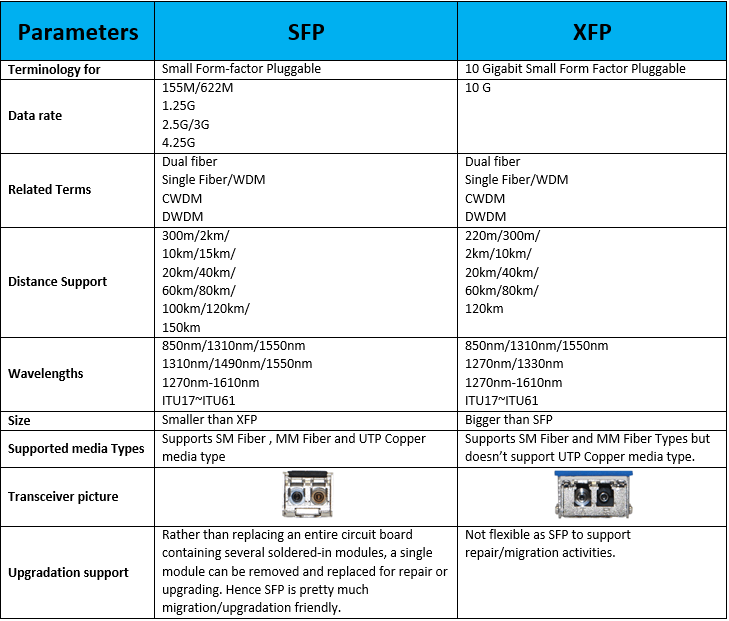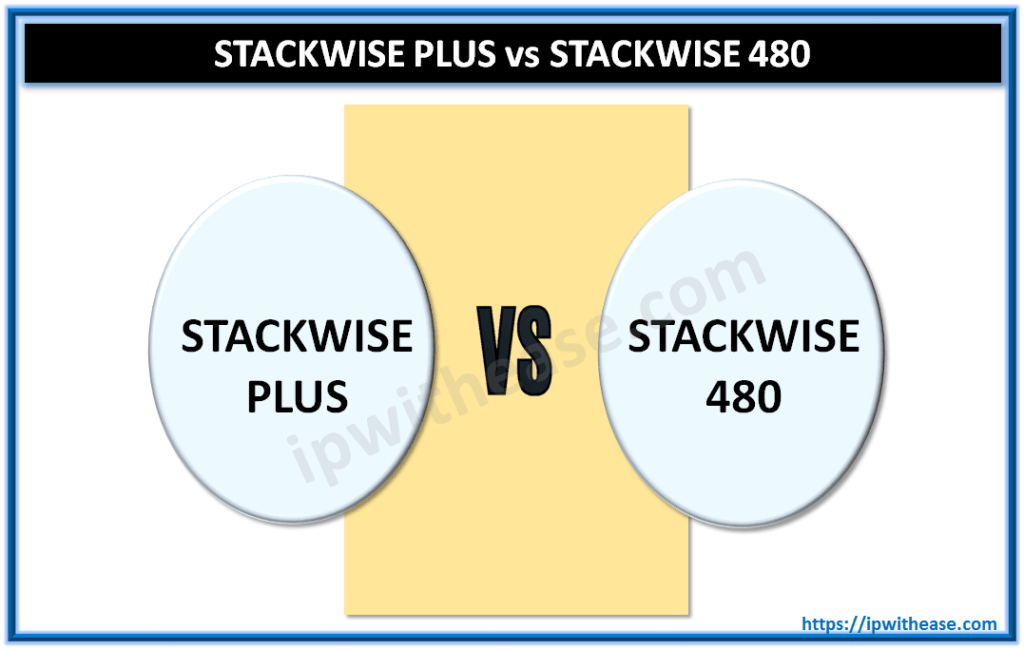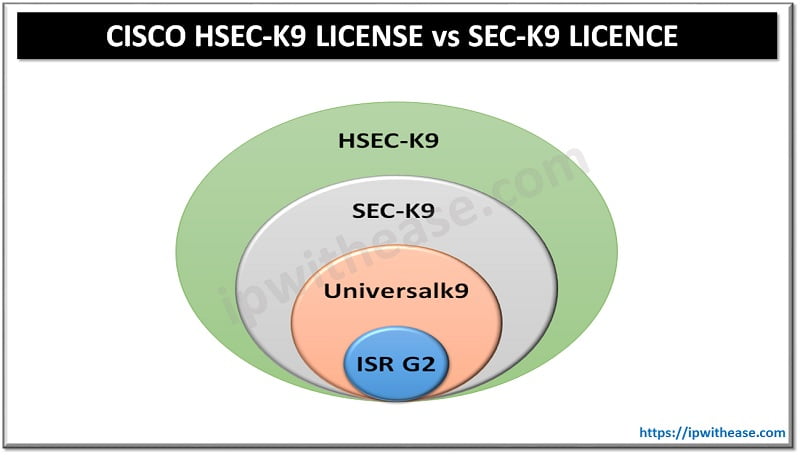The small form-factor pluggable (SFP) is a compact, hot-pluggable transceiver used for both for data communications applications for organizations. The form factor and electrical interface are specified by an multi-source agreement (MSA).
XFP (10 Gigabit Small Form Factor Pluggable) modules are hot-swappable and protocol-independent. They typically operate at near-infrared wavelengths (colors) of 850 nm, 1310 nm or 1550 nm. Principal applications include 10 Gigabit Ethernet, 10 Gbit/s Fibre Channel, synchronous optical networking (SONET) at OC-192 rates, synchronous optical networking STM-64, 10 Gbit/s Optical Transport Network (OTN) OTU-2, and parallel optics links.
Below table shares the difference between SFP and XFP –
ABOUT THE AUTHOR

You can learn more about her on her linkedin profile – Rashmi Bhardwaj




